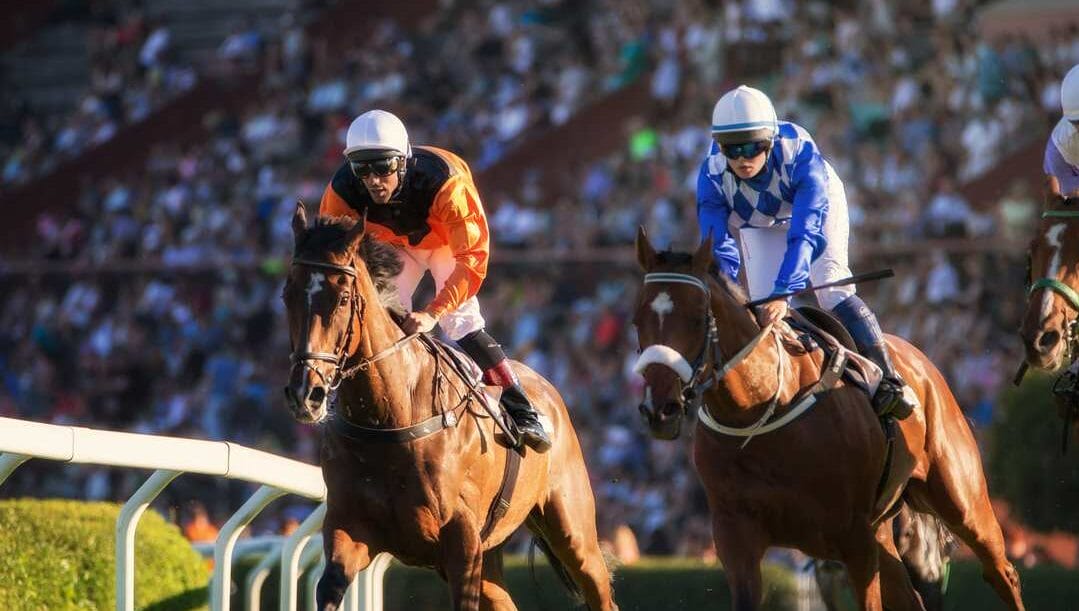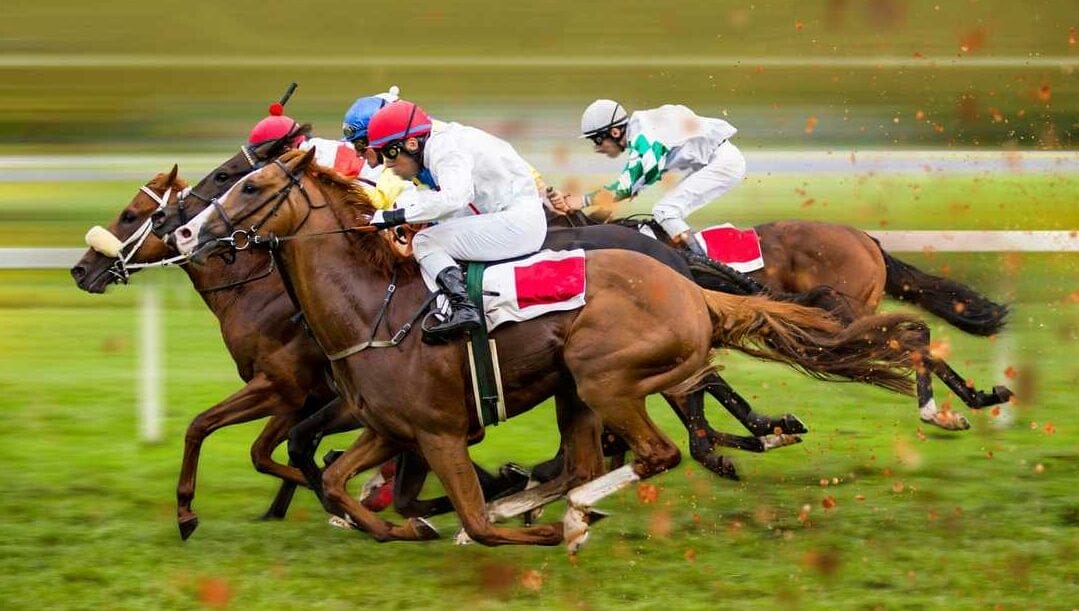If you’ve spent time following US horse racing, or horse racing tournaments on any of the global circuits or online sports betting sites, you know how to bet on horse racing. You’ll probably also know that not all horses are created equal. But you may be surprised to learn that when it comes to racing, there are significant variations in the breeds used for the different types of racing.
Types of horse racing
Horses come in all shapes and sizes, generally because they have been bred to perform certain tasks. For instance, a large, strong-boned horse will be used to pull a plow, while a smaller, more athletic animal is more suitable for rounding up cattle.
This principle holds true for racing too. Different types of racing require specific physical attributes. How different, you ask? Well, some races run at speed over a flat track, some include obstacles, and others extend for hundreds of miles over rough terrain.
The horses that run in these events can be as different as a sprinter is from a marathon runner. Think Usain Bolt versus Eliud Kipchoge – one powerfully built for short bursts of speed, the other lean and capable of sustaining a pace for hours at a time. Let’s take a closer look at what these races entail.
Flat racing
Most bettors will be familiar with the flat racing featured in online horse racing, or at tracks such as those overseen by the New York Racing Association (NYRA). Here you may have placed NYRA bets on fixtures at one of the three venues that fall under the NYRA, namely the Aqueduct Racetrack, Belmont Park, and Saratoga Race Course.
Typically raced around a level oval track, flat races are run over distances that range from 440 yards to 2.5 miles. Tracks vary from dirt to turf to synthetic surfaces, each of which can affect the speed of the race.
Steeplechasing (or jump racing)
Favored in Ireland and the UK, steeplechasing, or jump racing, combines flat racing with high speed jumping over obstacles on the track. Like human hurdlers, horses jump the obstacles in stride. Many of these horses begin their careers in flat racing. Often those that have displayed athleticism and agility will go on to train for steeplechasing. For this reason, many steeplechase horses are older than flat racing horses.
Harness racing
In these flat races, horses pull a two-wheeled cart (called a sulky) with a driver around a track. Races are run at the trot, or in a gait known as pacing. Generally run over a 1-mile track (although distances can vary), harness races require a fair amount of strategy. Position on the track can make or break a race, regardless of how fast the horse is, so driver skill is crucial.
Saddle trotting
Similar to flat racing, these races are run under saddle on an oval track. However, horses are required to trot instead of gallop.
Endurance racing

The marathon of horse racing, endurance events cover distances from 10 to 250 miles (the Mongol Derby is over 620 miles), over grueling terrain. Longer events are run in legs over several days. These races require tremendous degrees of horsemanship and strategy to ensure that horses are able to complete the race in good health.
Of course, this is by no means an exhaustive list. There are variations on these, as well as events that are significantly different, for instance, barrel racing, in which individual riders will gallop around barrels at breakneck speed. However, most US horse racing events you’ll see on a betting form will resemble those mentioned above.
Fastest horse breeds
So, with some idea of the requirements involved, just what breeds can you expect to see on the track?
Thoroughbred
Not to be confused with the term “pure-bred,” some might call the Thoroughbred the king of the flat track. It is this breed you are probably familiar with if you follow horse racing. Selectively bred through a rigid studbook since the mid-17th Century, the Thoroughbred was designed to run and most love it. Considered a “hot-blooded” breed – fiery, athletic, and sometimes highly strung – Thoroughbreds are tall and leggy. With deep chests, short backs, and good depth of hindquarters, they are built for speeds of up to 44 mph over short distances. While flat racing is their domain, they are also used in steeplechasing, and many go on to compete in other equestrian sports after they retire from racing.
American Quarter Horse
Recorded as being the fastest horse over a quarter mile, the American Quarter Horse has been clocked at over 55 mph. Generally shorter than Thoroughbreds, these horses are more compact and muscular, with exceptionally strong hindquarters, capable of propelling them at great speed. Quarter Horse racing is similar to flat racing, however, these races are breed-specific. Quarter Horses are also favored for barrel racing due to their agility and capacity for bursts of speed. Solid temperaments make these horses suitable for pleasure riding and other equestrian sports after their racing careers are over.
Arabian
The Thoroughbred may rule the flat track but when it comes to endurance races, few can touch the Arabian horse. One of the oldest breeds in existence, many other breeds originate from the Arabian. Often recognized for their beautifully dished heads, expressive eyes, and flowing manes, this breed is most valued for its incredible stamina and strength under extreme conditions. Smaller than the Thoroughbred and Quarter Horse, they are still capable of carrying an adult rider with ease. Like Thoroughbreds, they are hot-blooded but more level-headed. Arabians are considered to be one of the most intelligent breeds. While fans of flat racing might not be familiar with the endurance field, the sport has a strong following in the UAE, where Arabians are also used in breed-specific flat racing.
Standardbred
Originating in North America in the 17th Century, the Standardbred is similar in type to the Thoroughbred, however, its body is somewhat more heavyset and muscular, despite maintaining a refined head and legs. They are highly trainable, calm, and sensible, which is a requirement of the harness racing they’re known for, since these races require strategy as much as speed. They are also used for saddle trot racing.
Orlov and French Trotters
While these are separate breeds, there are enough similarities between these Trotters to make them ideal for the sport of saddle trot racing as well as harness racing. With the Orlov originating in Russia and the French Trotter obviously of French descent, the breeds are athletic and trainable, with gentle temperaments. They have been selectively bred to produce a long-striding trot to cover distance at great speed and can reach up to 40 mph at the trot.
Akhal Teke
Although no longer a common sight on the track, the Akhal Teke deserves mention as being one of the earliest breeds used for horse racing. Their history traces back over 3,000 years to Turkmenistan, where they were used both in battle and on the track. While not as tall as a Thoroughbred, they have similar physical characteristics, with strong limbs and an athletic build. The breed is typically recognized for the metallic sheen of its coat, which is not characterized by any other breed.
Online horse racing with Borgatax
At the end of the day, whether you know your breeds or not, online horse racing is still an exhilarating sport to follow. Simply register at BetMGM for a range of online sports betting options, as well as casino table games and online slots.


